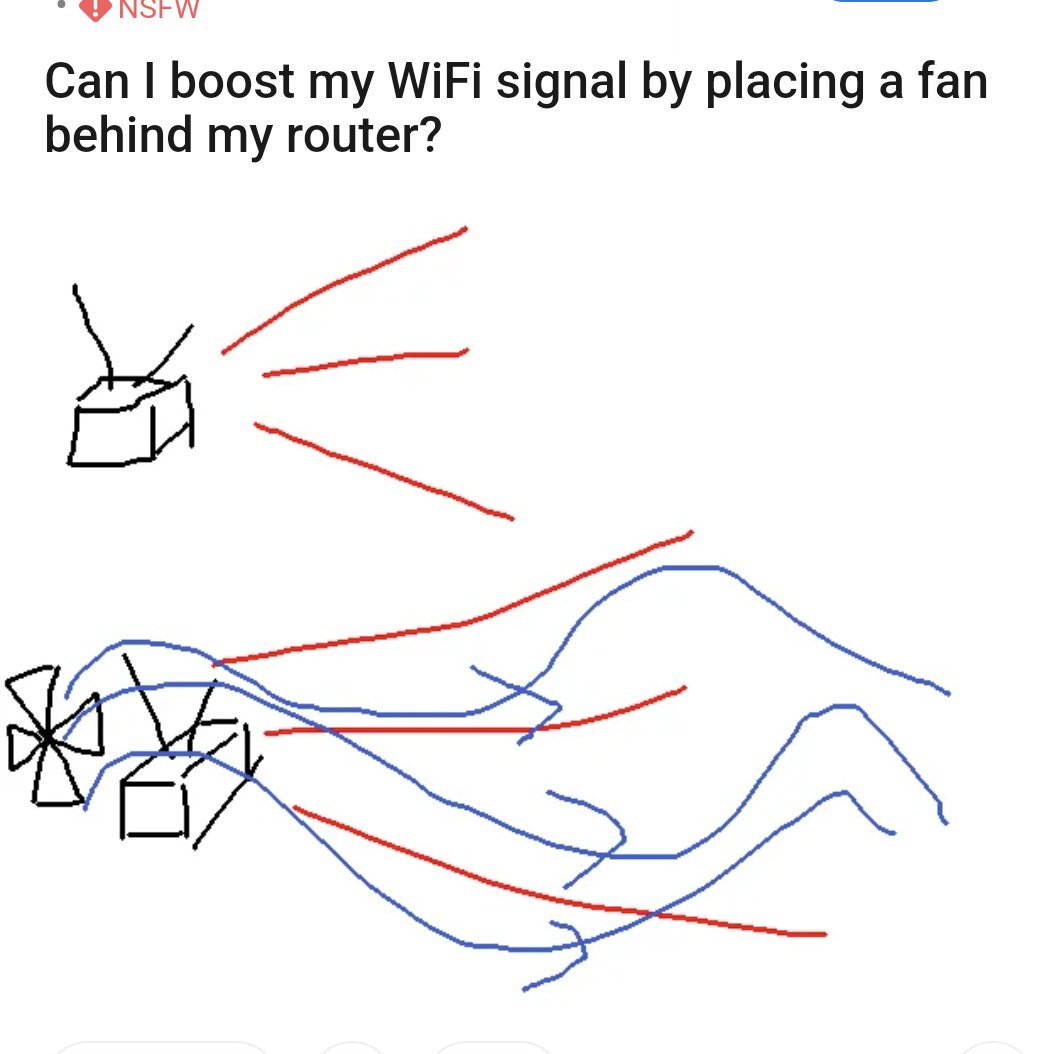this post was submitted on 12 Sep 2023
1268 points (97.7% liked)
Memes
47041 readers
1017 users here now
Rules:
- Be civil and nice.
- Try not to excessively repost, as a rule of thumb, wait at least 2 months to do it if you have to.
founded 5 years ago
MODERATORS
you are viewing a single comment's thread
view the rest of the comments
view the rest of the comments

I've heard about this but not had loads of time to read into how it works and how effective the algorithms are. Do you happen to know about it in depth? I've wondered for a while how much efficiency is actually improved by the beamforming and what the limitations are
Like I've read about cantennas that fire 802.11g over several hundred meters, which in my understanding is obviously is out of reach for regular WiFi antenna even with beamforming algorithms (or is it? I actually don't know)
Read up on Yagi antennas.
Essentially you are stacking waves. If you have an array of trasmitters, you can have them send a constructive signal or a destructive signal as a signal "wave" passes them. Using this property, you can change the shape of the wave propagation. Think of it like throwing a stone in a pond, and then throwing in a second or third stone at the exact right moment to combine the ripples, creating a stronger wave in a particular direction depending on when and where you throw the stones.
We use it for talking to distant satellites, but then we also combine arrays of large directional dish antennas with beam shaping algorithms
Man, I've always wondered how yagi antennas actually managed to produce a directional beam vs something like a dipole. Your comment has really made it click for me, honestly big thanks! Very clear 5-9
Yep. Now imagine each element on the yagi antenna is its own antenna that can be triggered by a controller, instead of just being one big "dumb" antenna. Now by timing the "firing" of each antenna you can create a directional beam in pretty much any direction.